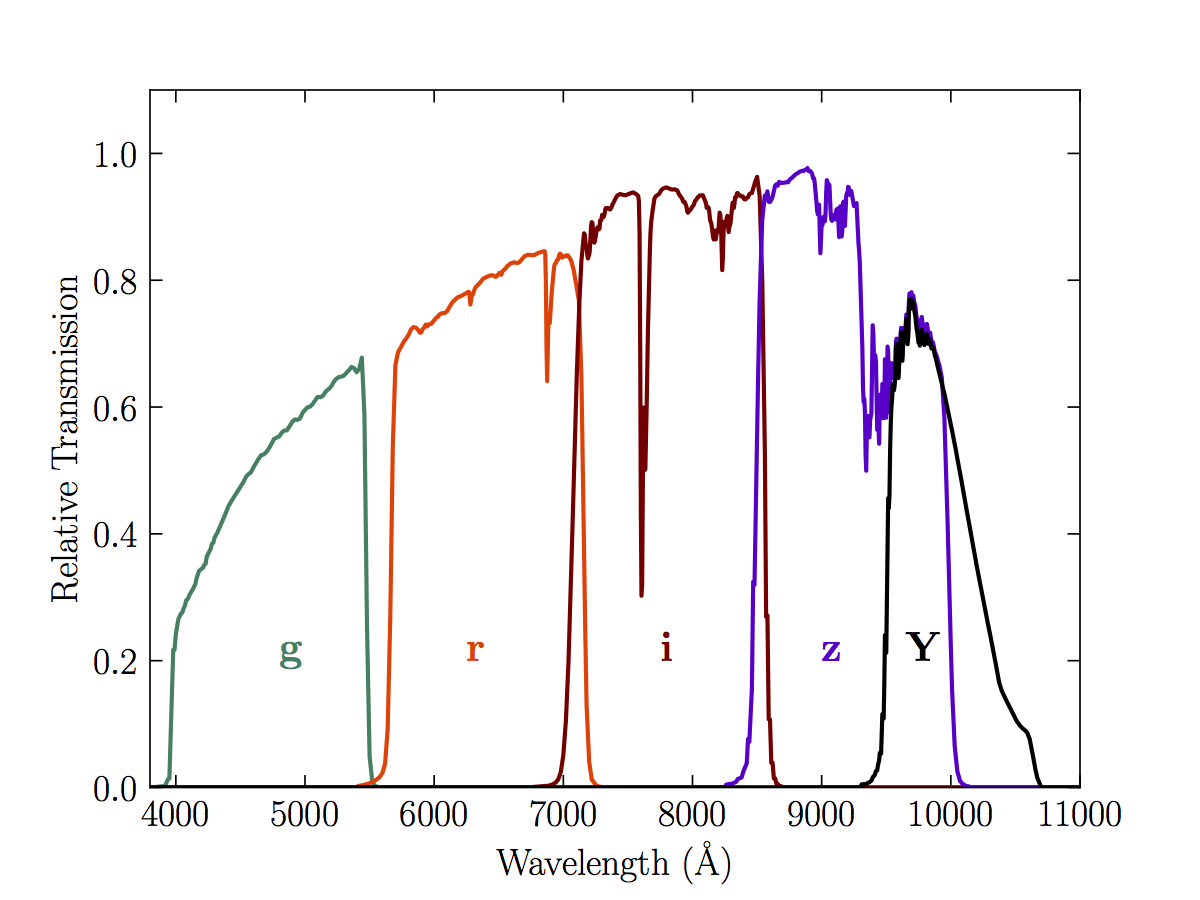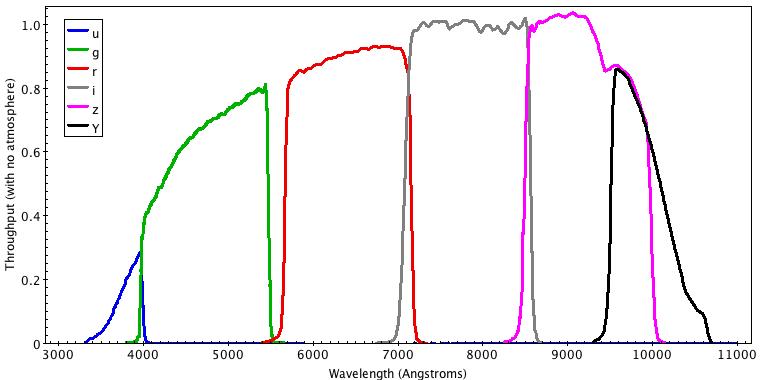

DECam is a high-performance, wide-field CCD imager mounted at the prime focus of the Victor M. Blanco 4m Telescope at CTIO, with 62 science CCDs (60.5 useful) with 520 megapixels and images 3 square degrees (2.2 degree wide) field at 0.263 arcsecond/pixel resolution. DECam is a facility instrument, available to all users. DECam was built to carry out the Dark Energy Survey [1] (DES) Project by the DES Collaboration, which finished observations in January 2019. We can accommodate programs from small to large, and also those with special requirements such as synoptic and target of opportunity. Most of the programs fit within a "half night" organization, which provides a better match of program requirements to lunar phase than does whole night scheduling. Note that observations are taken "classically", with astronomers present at the telescope, although we can also under pre-arranged conditions support remote observing from a permanent and tested remote observing facility. We do not offer queue observing. Please do not hesitate to contact us! (decam-help@ctio.noao.edu [2]).
OBSERVING HELP:
DATA:
USEFUL LINKS:
IMPORTANT!
NEWS:
CTIO Contacts
_________________________________________________________________
CTIO DECam Support Pages [49] (Internal Use Only)
DECam PropIDs & Special Cases [50] (Internal Use Only)
DECam Log of Configuration Changes and Events [51] (Internal Use Only)

DES DR1 Standard Bandpasses for the DECam g, r, i, z and Y filters. The bandpasses represent the total system throughput, including atmospheric transmission (airmass = 1.2) and the average instrumental response across the science CCDs.

DECam filters ugrizY throughput (with no atmosphere)
Links
[1] http://www.darkenergysurvey.org/
[2] mailto:decam-help@ctio.noao.edu
[3] http://www.ctio.noao.edu/noao/content/DECam-Safety-Precautions
[4] http://www.ctio.noao.edu/noao/content/DECam-User-Guide
[5] http://www.ctio.noao.edu/noao/content/DECam-What
[6] http://www.ctio.noao.edu/noao/content/Remote-Observing-Blanco
[7] http://www.ctio.noao.edu/noao/content/Status-DECam-CCDs
[8] http://www.ctio.noao.edu/noao/content/DECam-Calibration-Files
[9] http://www.ctio.noao.edu/noao/content/DECam-filter-information
[10] http://www.ctio.noao.edu/noao/content/DECam-Shutter
[11] http://www.ctio.noao.edu/noao/content/DECam-Known-Problems
[12] http://www.ctio.noao.edu/noao/content/DECam-Frequently-Asked-Questions
[13] https://www.noao.edu/noaoprop/help/too.html
[14] http://www.ctio.noao.edu/noao/content/ToO-Policy
[15] https://www.noao.edu/noaoprop/att/2021A/Blanco_ToO_Insert_2021A.pdf
[16] http://ast.noao.edu/data/docs
[17] https://astroarchive.noao.edu
[18] https://des.ncsa.illinois.edu/releases/dr1/dr1-access
[19] http://legacysurvey.org
[20] https://datalab.noao.edu
[21] https://www.noao.edu/noao/staff/fvaldes/CPStacks/
[22] https://www.noao.edu/meetings/decam2018/agenda.php
[23] https://ui.adsabs.harvard.edu/abs/2018ApJS..239...18A/abstract
[24] http://www.noao.edu/meetings/decam2015/schedule.php
[25] http://www.noao.edu/meetings/decam/schedule.php
[26] https://indico.bnl.gov/conferenceDisplay.py?confId=672
[27] https://indico.bnl.gov/conferenceDisplay.py?confId=878
[28] http://lanl.arxiv.org/abs/1312.2313
[29] http://arxiv.org/abs/1402.0725
[30] http://arxiv.org/abs/1403.3317
[31] http://arxiv.org/abs/1403.6127
[32] http://arxiv.org/abs/1403.6185
[33] http://adsabs.harvard.edu/abs/2014ASPC..485..379V
[34] http://www.ctio.noao.edu/noao/content/DECam-Science-papers
[35] http://www.ctio.noao.edu/noao/content/acknowledgement-papers-0
[36] http://www.ctio.noao.edu/noao/content/NOAO-Survey-Machine-and-Data-Trove-%E2%80%93-Dark-Energy-Survey%E2%80%99s-Rich-Legacy
[37] http://www.ctio.noao.edu/noao/content/Properties-N662-filter
[38] https://www.noao.edu/meetings/decam2018/
[39] http://www.ctio.noao.edu/noao/content/Exposure-Time-Calculator-ETC-0
[40] http://www.ctio.noao.edu/noao/content/Communicating-DECam-Exposures-Ignore-NOAO-Community-Pipeline
[41] http://www.ctio.noao.edu/~walker/
[42] http://www.ctio.noao.edu/noao/users/tabbott
[43] mailto:kvivas@ctio.noao.edu
[44] mailto:azenteno@ctio.noao.edu
[45] mailto:cmartinez@ctio.noao.edu
[46] http://www.ctio.noao.edu/blanco/BlancoSchedule2020A.html
[47] http://www.ctio.noao.edu/blanco/BlancoSchedule2019B.html
[48] http://www.ctio.noao.edu/noao/content/DECam-Support-Staff
[49] http://www.ctio.noao.edu/noao/content/CTIO-DECam-Support-Pages
[50] http://www.ctio.noao.edu/noao/content/DECam-PropIDs-Special-Cases
[51] http://www.ctio.noao.edu/noao/content/Log-Configuration-Changes-and-Events
[52] https://www.darkenergysurvey.org/wp-content/uploads/2018/01/DR1Release.pdf
[53] http://www.ctio.noao.edu/noao/sites/default/files/DECam/STD_BANDPASSES_DR1.fits
[54] http://www.ctio.noao.edu/noao/sites/default/files/DECam/STD_BANDPASSES_DR1.dat
[55] http://www.ctio.noao.edu/noao/sites/default/files/DECam/README_DR1_filters.txt
[56] http://www.ctio.noao.edu/noao/sites/default/files/DECam/ufilter.dat
[57] http://www.ctio.noao.edu/noao/sites/default/files/DECam/DECam_filters_transmission.txt
[58] http://www.ctio.noao.edu/noao/sites/default/files/DECam/decam_filters_transmission.gif
[59] http://www.ctio.noao.edu/noao/content/DECam-VR-filter
[60] http://www.ctio.noao.edu/noao/content/Properties-N964-filter
[61] http://www.ctio.noao.edu/noao/sites/default/files/DECam/DECam_filters.xlsx